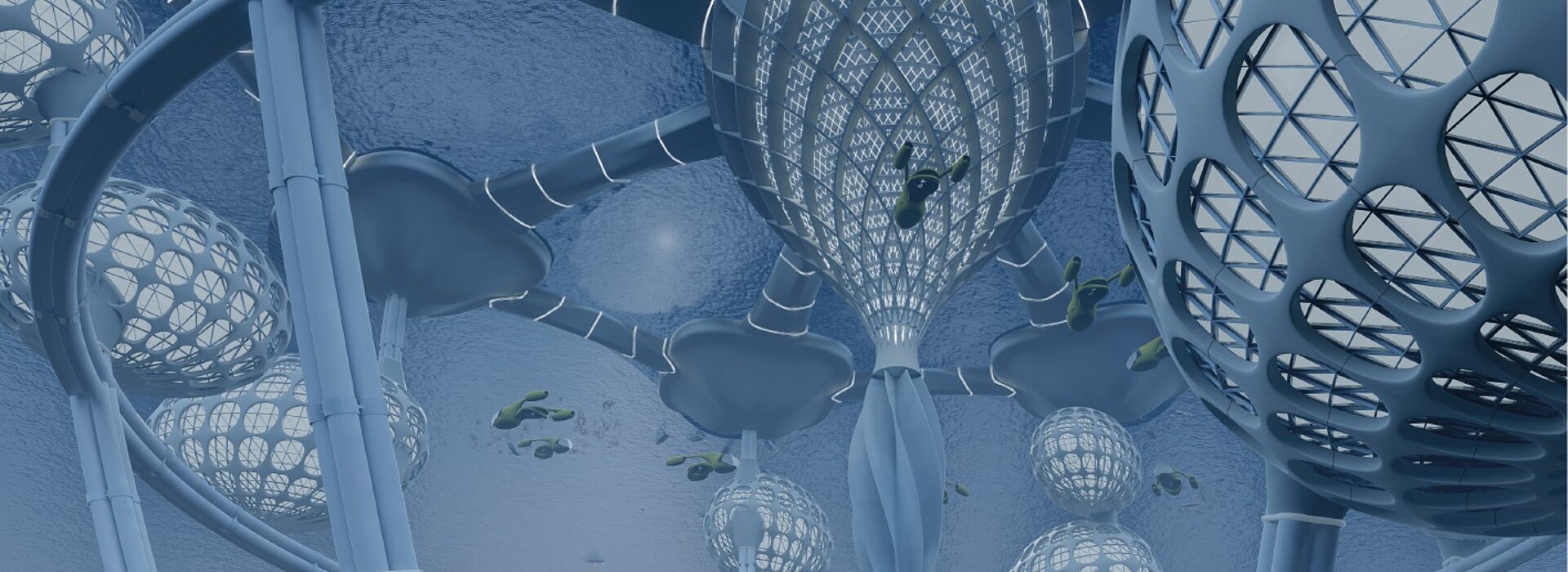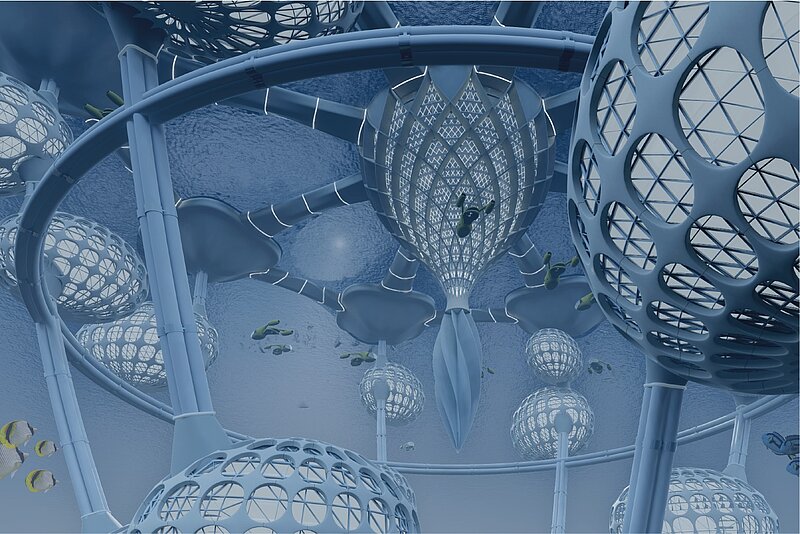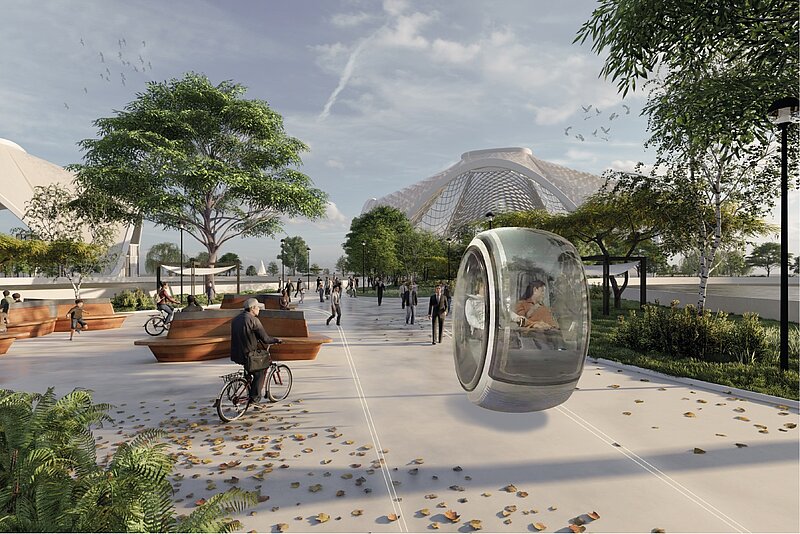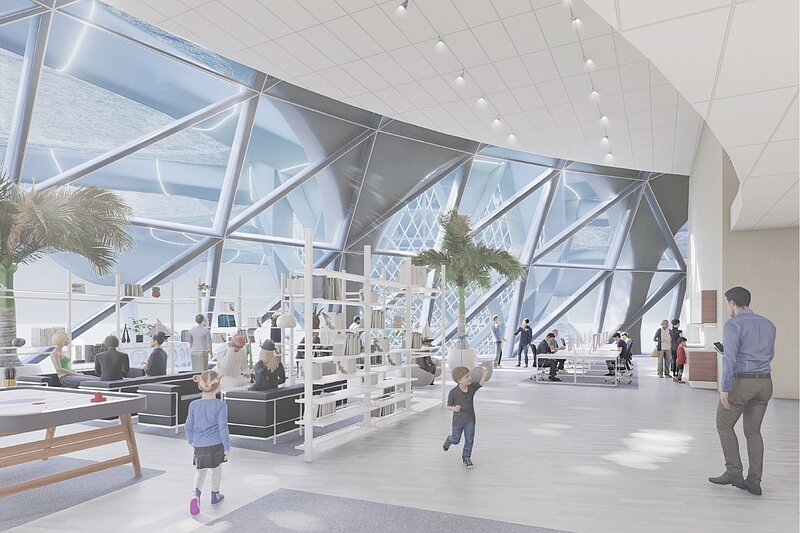LILLYANA Splendour of life beneath the surface: “Lillyana” – A hydrophytic model for urban design
- Year2019
- LocationShanghaï, China
In the context of a rapidly increasing global population growth and the associated shortage of living space, alternative urban concepts in a marine environment are gaining importance under ecological and sustainable aspects.
The concept- guideline “renaturation instead of soil sealing” is an effort to react on the challenges of current megatrends in the context of the sea. The underwater city structure is designed for up to 15,000 inhabitants in the vicinity of a large coastal city. “Lillyana” represents an ideal system that can be applied to various geographical and climatic conditions and their specific demands.
The form is inspired by hydrophytes - plants that grow above and below the water and benefit from their environment. Through their biometric and biological mechanisms, the shape has been improved for energy efficiency, buoyancy and stability. Thus, the wind-, water- and solar energy production is directly embedded in the design language.
The main challenge of this project was to develop a self-sufficient system that could also allow different forms of social life at the same time. To achieve this, we have tried to understand the factors that make an attractive city:
“Living”, “working”, “mobility”, “supply” and “recreation”
These fields of action provide the framework for our design:
Therefore, a superior supply organ will be placed in the centre, from which radially arranged bridge systems will form connections to floating platforms. These are anchored beneath the seabed and represent the quarter centres. From the platforms, supply pipelines, on which various spheres are suspended, lead into the depths. They shift private, professional and social life below the water surface.
High attractiveness, beneath as well as above the sea level, is achieved by providing well-located and spatially qualitative living and working areas with a recreation and leisure area, as well as an intelligent infrastructure via a pipeline network.






